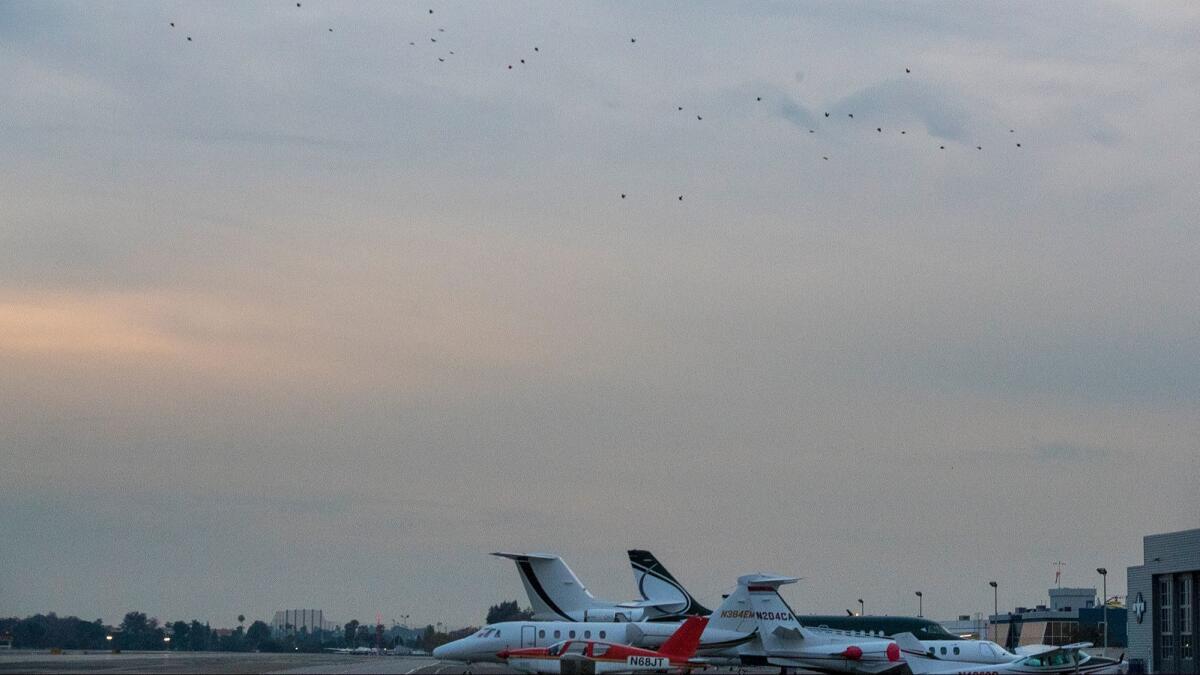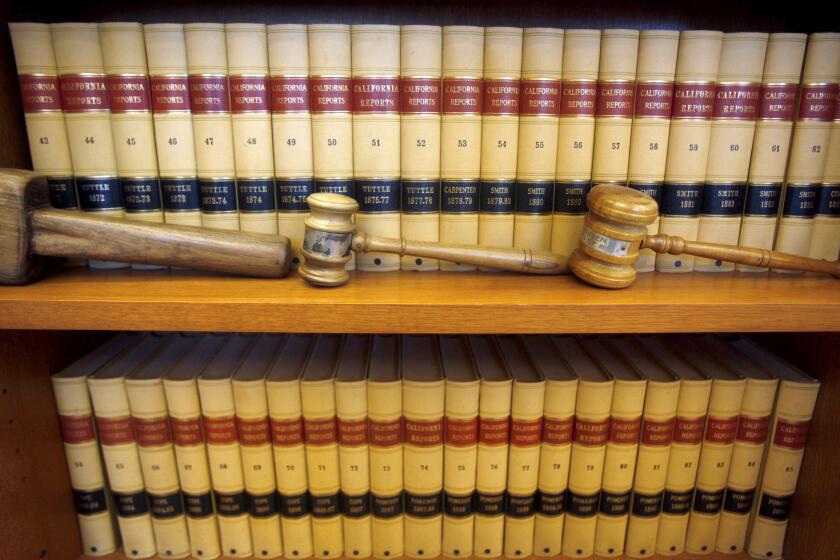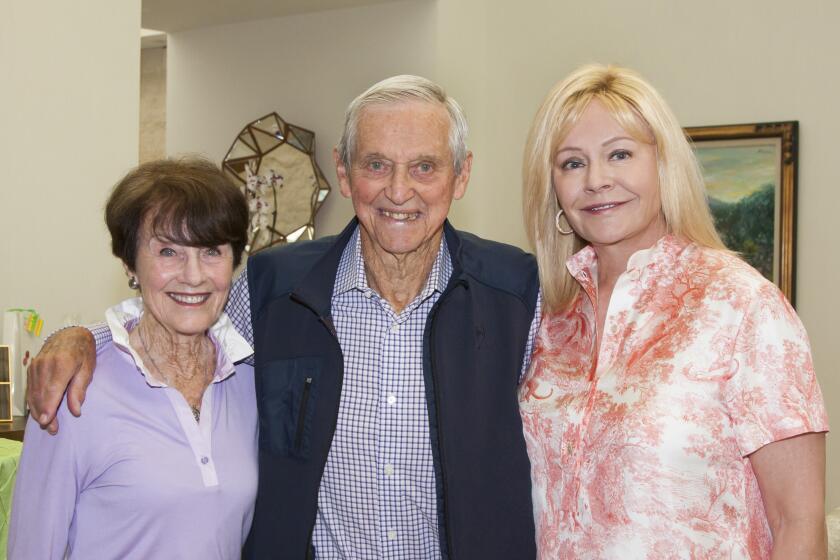Letters to the Editor: FAA can safely manage the skies without greater disruption to residents

This is in response to Robert Lange’s March 11 commentary (“Too much additional noise regulation at John Wayne Airport could distract pilots, air crews,” March 9) and the ongoing excessive noise issue created after implementation of the Federal Aviation Administration’s Metroplex plan for commercial and civilian air traffic. I am addressing the current, ongoing noise and safety impact as it relates to only our immediate coastal area.
First, I would like to thank Col. Lange (ret.) for his service to our country and obvious enthusiasm for aviation. While his credentials are impressive, the premise that our commercial and private airplanes were apparently not as safe under prior regulations for airport approaches and takeoffs from Orange County and Long Beach airports is not supported by direct historical data. Our airspace has been extremely safe, as evidenced by the lack of serious incidents and incursion over many decades.
Although I appreciate the history lesson, the fact of the matter at hand is that the FAA’s new Metroplex project’s changes to air traffic patterns has degraded the public’s right to a quality of life previously enjoyed and was promised in public hearings, prior to implementation. At what point, post facto, does this federal agency, whose pledge to not significantly affect and impact communities, admit it was wrong and correct this egregious intrusion into the peace of the majority of the areas residents?
I have been a homeowner in Huntington Beach since 1989. I chose my neighborhood based on affordability, location and tranquility. I looked at homes near the Back Bay of Newport, but decided the existing flight patterns created noise levels unacceptable to me. In the neighborhood I purchased a home, jet (or any plane) noise was rarely heard.
Recently, since the new Metroplex plan rules implementation, jet engine wash, whine, roar and general noise is nearly constant and excessive; one jet after another, after another, only minutes apart. All day, every day.
The overall noise level has become unreasonable and negatively impacts the quality of life for hundreds of thousands of residents in this area. The noise penetrates my home (and others) even with all the doors and windows closed.
Why? In part, so profitable airlines can fly at lower attitudes, saving money, and fly in more-concentrated air corridors that go over more homes instead of more open ocean.
How is this safer or better than the prior patterns? The rationale of reduced carbon emissions, while benefiting the earth in some small way, benefits the carriers more. Residents pay the subjective, lasting, daily price. The new flight patterns only inflict unnecessary constant noise levels and chemical fallout over more people than ever.
These new rules only seem to enhance the benefits for a small minority. Not all of us are so fortunate to own or fly a Cessna, Gulfstream or 737.
And while a safe transportation system is critical, it has been built to serve the general public good and not a minority of aviation stakeholders. There are more homeowners and renters than plane owners and operators, by far. I still believe this is a democracy.
This area has lived in relative peace with John Wayne Airport (SNA) and Long Beach (LGB) airports under previous noise abatement plans. The Metroplex changes were made without fully understanding or admitting the negative noise impact to surrounding communities. In either case, a change needs to be made to restore public confidence in the FAA and our right as the public to use our air transportation system safely and in a manner that is respectful of the public’s right to enjoy our homes in relative peace without constant unnecessary jet plane “strafing.”
I believe we all appreciate the heroic efforts made during rescues. But let’s not conflate infrequent rescues with a new situation created by overreach or incomplete knowledge, understanding and experience. This change in air traffic patterns has a near constant dramatically negative impact on the auditory and chemical environment of our area that is not necessary and is unwelcome by most.
I was amused and slightly offended by Col. Lange in his assertion that I should move if I don’t like it. I don’t, and I’m not moving. Virtually everyone I’ve spoken to, including City Council members, doesn’t like it either. This issue is not going away until satisfactorily resolved.
I will fight this change in aviation policy through all available legal methods. Please join me.
I would suggest Col. Lange realize his home profits and move to an airplane community. You can drive your plane from your home’s hangar garage to the community runway, then rain down your leaded fuel combustion compounds (plus noise) on like-minded individuals.
I moved here, like probably most people, to enjoy opportunity, natural beauty, culture, great diverse residents and responsible public and private development — land, sea, and air.
FAA, please make the required modifications to the Metroplex plan and give us our relative peace and quiet back.
Richard Fancher
Huntington Beach
Festival reflects Laguna’s lack of diversity
Re. “Non-diverse Laguna art scene paints a white-walled garden,” David Hansen column (March 9): The art of a community is a reflection of that community. If you see Laguna art as a slice of Wonder Bread, maybe that only goes to the accuracy of your perceptions. By the way, I get your point, but regard it as partially informed and too parochial. You can’t get orange juice out of a rutabaga, and you can’t get an ethnic mix where the population isn’t diverse.
I was a founder of the Sawdust Festival, and at the time (1968), when I did so, I lived on Woodland Drive, when it was still primarily African-American. None of the people I knew there (and I knew all of them) had the least inclination to be an artist. Over the 50 years of Sawdust existence, we have had as many black artists as have showed up: Chris Ashanti, Rodney Anderson (board member), Basil Gerard Stripling and long-time grounds manager Curt Blanton.
Your reference to Makaila Palmer as a “jewelry-maker” is too dismissive by half, since she is a real painter, learning and improving on her natural talents. She is practicing a survival-mechanism within Sawdust, which is to offer something commercially viable in order to support one’s more serious (but less commercial) efforts.
It’s a puzzle to me how all these Laguna College of Art and Design (LCAD) grads make a living once they have have been programmed by the institution. I presume they get absorbed by the corporate world of advertising and product design, but whatever quasi-creative career opportunities ensue, these youngsters are unlikely to be able to live in Laguna while pursuing them, no matter what color they may be. As you so-rightly noticed, beginners at anything are priced out. (During the ‘50s and ‘60s there were always rentals under $100 a month).
The entire theme of how to keep Laguna Beach an art colony seems moot to me. It’s a community that has art as its identity, like Capistrano has its swallows. But the nature of it now, compared to how it was when landscape artist William Wendt moved there, is as different as you so rightly point out. The festivals are flourishing (perhaps unduly), the museum is developing a cachet, the galleries are struggling unequally, and the artists are on the bottom rung (as usual).
The Sawdust Festival is the last gasp of that Old Laguna, and its 50-year-tenure has already lasted about 49 years longer than I thought it would. It’s a tough old bird in many ways, and may yet survive in Laguna’s air-conditioned and synthesized modernity, like a diorama of Neanderthals at the natural history museum. It’s fun there at the Sawdust Festival, which nobody will ever accuse the Art-A-Fair or the Festival of Arts of being.
When our top-heavy society inevitably collapses, and the mansions on the hills are vacant, there will still be a few odd-balls beach-combing and putting together what they find washed up in unique and individual ways just because they like doing it. In other words, the innate function of making art will survive its exploiters.
In the meantime, move if you don’t like it.
Dion Wright
Flagstaff, Ariz.
How to get published: Email us at dailypilot@latimes.com. All correspondence must include full name, hometown and phone number (for verification purposes). The Pilot reserves the right to edit all submissions for clarity and length.
All the latest on Orange County from Orange County.
Get our free TimesOC newsletter.
You may occasionally receive promotional content from the Daily Pilot.



